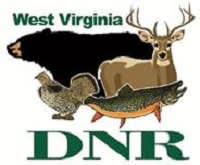West Virginia Winter Waterfowl Survey Results
OutdoorHub 01.24.14

Wildlife biologists in West Virginia counted 8,797 ducks and 6,709 Canada geese during the annual mid-winter waterfowl survey conducted in early January, according to Steve Wilson, waterfowl biologist for the West Virginia Division of Natural Resources Wildlife Resources Section.
“Duck numbers were the highest since 2001, 67 percent higher than 2013 and 123 percent above the 10-year average,” Wilson said. “Canada goose numbers were up 7 percent from the previous year and their numbers were 40 percent above the long-term average.”
The increase was not unexpected due to the weather that occurred in December. When cold weather freezes up smaller, still water and there is snow covering farm fields, waterfowl are pushed south and/or forced to concentrate on larger bodies of water that are not frozen.
“Waterfowl seasons are open through most of January, so hunters should be enjoying a great late season,” Wilson said.
Canada geese, mallards and black ducks, as usual, were the most commonly observed species in the 2014 survey. Many other waterfowl species were also observed, including canvasback, green-winged teal, pintail, widgeon, ring-necked duck, redhead, bufflehead, wood duck, gadwall, mergansers, snow geese and tundra swans. Five adult and five juvenile bald eagles and three golden eagles also were observed.
The survey was conducted Jan. 8-10, 2014, and included portions of the Kanawha, Ohio, Shenandoah and New rivers as well as Tygart and Bluestone lakes.

